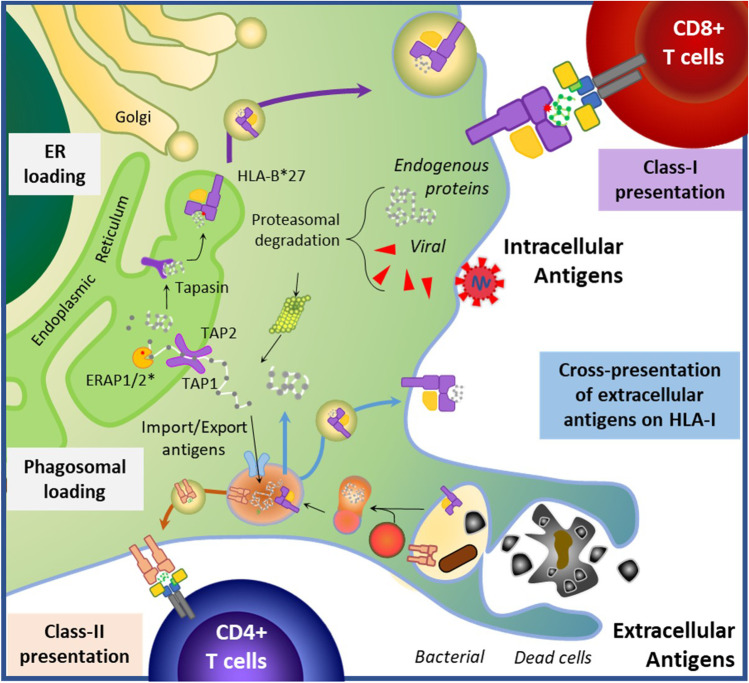Fig. 1.
Antigen presentation pathways altered by HLA-B*27 and ERAP1/2 epistasis: Generally, intracellular or extracellular antigens are presented on lymphocytes by HLA Class-I or Class-II molecules, respectively. Antigen-presenting cells can also mobilize extracellular antigens (such as those from phagocytosed bacteria or dead cells) for class-I presentation (termed cross-presentation) and generation of cytotoxic responses. Upon phagosomal or proteasomal degradation, antigens can be directly loaded or imported to the endoplasmic reticulum (ER) by TAP1/TAP2 proteins. Aminopeptidases at the ER (ERAP1/2) trim imported proteins, which are then loaded into the HLA molecule for presentation, aided by Tapasin. The peptide-HLA complex is then exported to the surface for recognition by its cognate TCR. The interaction between altered HLA-B*27 and ERAP1/2 leading to AS (epistasis) was the first example of gene–gene interaction identified in any human disease, and results in an altered peptidome presented to cytotoxic T lymphocytes, consistent with the arthritogenic peptide hypothesise

